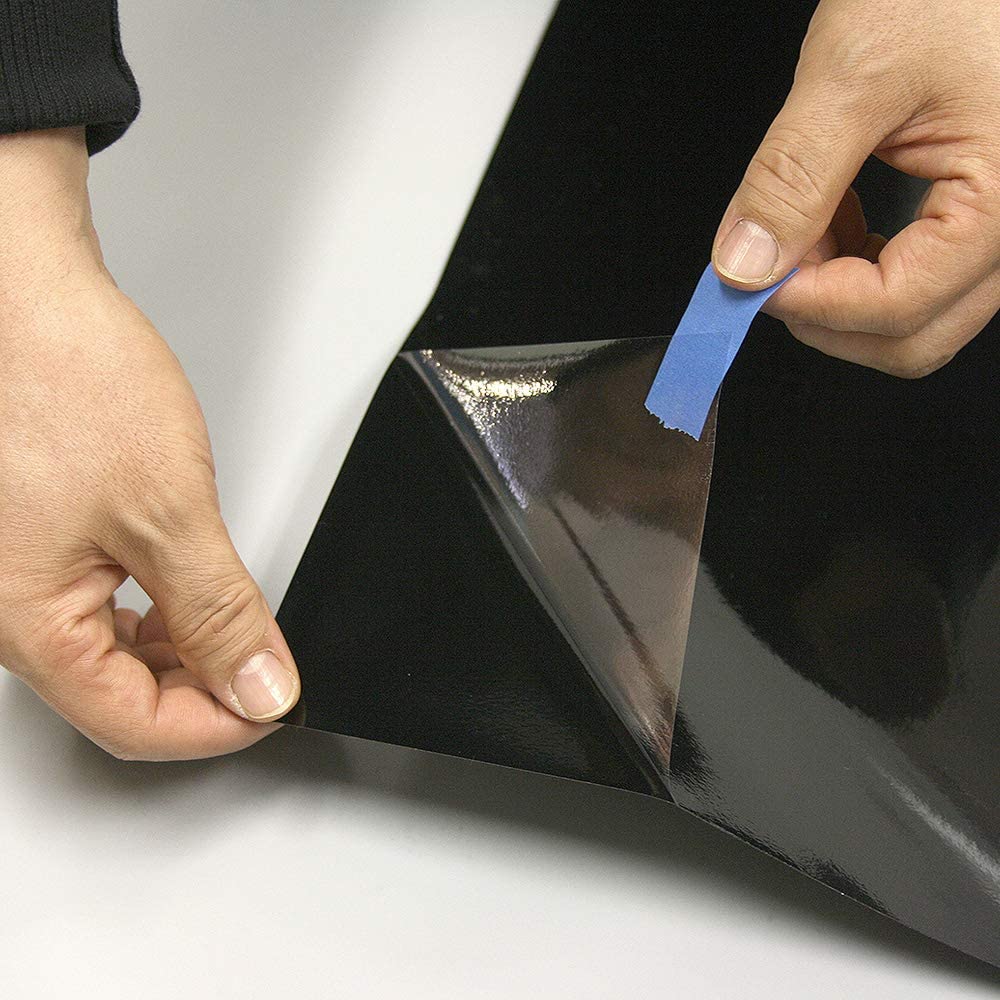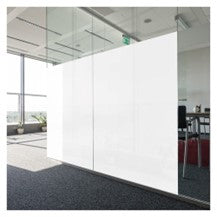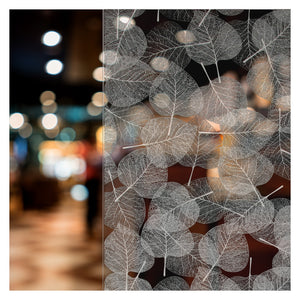Check out our Youtube video on how to install self-adhesive window film

Backing Liner
In a Nutshell
- The backing liner is a clear layer attached to the film layer.
- The liner prevents the film from adhering to a surface.
- The film needs to be separated from its liner before it can be installed.
Introduction & Purpose
The backing liner is a thin, clear plastic sheet that is attached to the window film. The purpose of this backing liner is to cover up and protect the adhesive on the film, so that the film doesn’t stick until it is time for the actual installation of the film.
Static cling films do not have adhesive, but they still initially come with a backing liner attached. This shields the cling side of the film from debris that might otherwise get on it. Static cling films can be removed and rolled up for reuse later, even without the backing layer.
Sometimes films may use a different material for the backing liner than a clear plastic sheet. Our PFR film, a colorless adhesive-based frost film, uses a white paper material for its backing liner.
Removing the Liner
Before you install the film on the window or other glass (or glass-like) surface, you need to peel off the backing liner from the film. This is because the liner covers up the sticky (or cling) side of the film, preventing the film from properly attaching to the window.
Separating the film layer from the backing layer is analogous to peeling off a sticker. (You would peel the sticker off the sheet it is on, which is called a “backing paper”, before applying the sticker to a surface; you would not just take the sheet itself and try to stick it to a surface.)
Because the liner completely covers the film (they have equal area size), it helps to attach tape to each layer to allow you to grab onto the two layers separately. We recommend having two pieces of tape on a corner, on opposite sides, with the tapes positioned slightly away from each other (so that they don’t stick to each other). The idea is that as you pull apart the tapes, the two layers get pulled apart with them.
An adhesive film can, once the liner is taken off, stick to itself or to other unwanted surfaces if you’re not careful. As soon as you begin to separate the two layers, it is necessary to spray ample amounts of soapy water on the adhesive side of the film layer. The window surface should also be sprayed with the same solution. The soapy solution stops the film from sticking too fast, allowing you to slide and reposition the film as needed. (Once the film is correctly positioned, use the squeegee to squeeze out the soapy water.)
Which Layer to Put Up?
Once the film is separated from the backing, the film can be installed on the window. The backing liner can simply be discarded afterwards.
Some films, such as security and graffiti protection films, are just as clear as their backing liner, so sometimes people get confused about which layer should be installed.
The film layer is thicker and more rigid, and if it is an adhesive-based film, one side of it (the side that the liner was covering) is sticky. This is the layer that would go on the window. The backing layer is thinner and lighter.
The film also has a scratch-resistant coating that makes it less susceptible to scratches than the liner.
Common Issues
A film cannot properly stick (or cling) without removing the liner first. It might stay on for a short time, due to the water being used during installation, but it would fall off the surface soon afterwards.
If the film does not stay on, it means that you did not peel off this backing layer. This is a critical step and skipping it will result in an unsuccessful film installation. You need to ensure that the liner is peeled off before continuing with the process.
A misunderstanding some customers have is that a “backing liner” is an included component that is needed to install the film. It is quite the opposite: the liner prevents the film being applied to the surface. This is a good thing when the film is stored somewhere and isn’t installed yet, because you would not want it to adhere prematurely. But when it is time to install the film, the liner needs to be taken out first.
A clear liner attached to a film is essentially invisible until separate from the film, so some people might think that a film does not have a liner, particularly after an unsuccessful attempt to peel it off. If you apply a tape piece to a layer and the tape simply comes off the layer when you pull on it, then you may want to consider using a strong enough tape that can properly pull the layer with it.
The presence of the liner can also be deduced logically for an adhesive-based film in particular: if there was no liner on it, the film would already be sticky, and the roll of film would already be sticking to itself.
Simply put, if the adhesive film doesn’t seem to be sticky, it will not stick.








